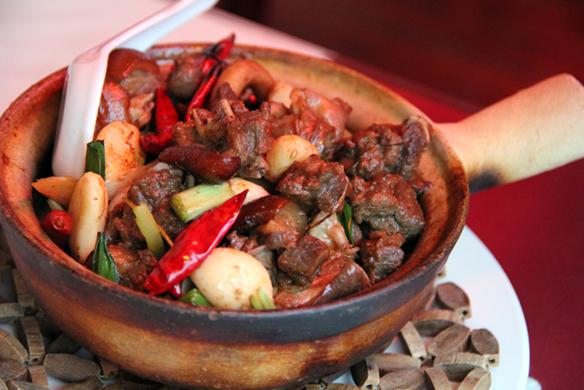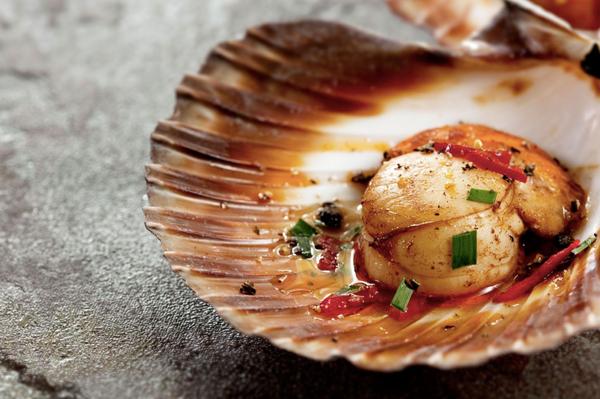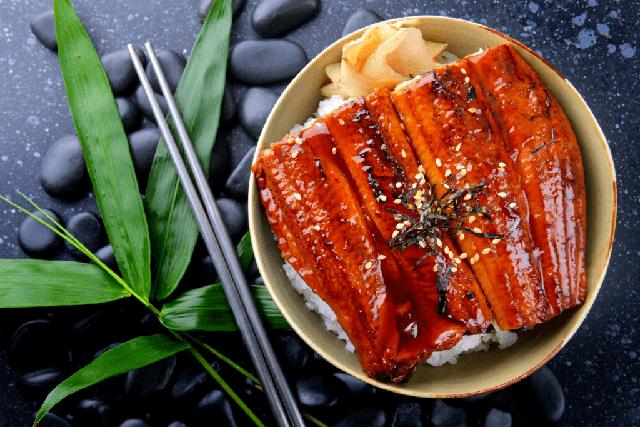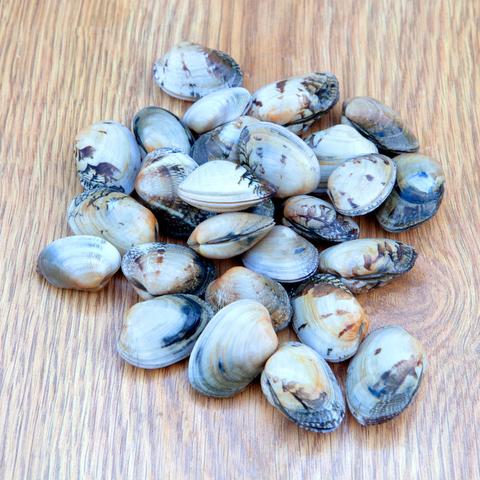
Curious about the taste of rabbit meat? Discover the flavorsome world of rabbit cuisine as we explore what rabbit tastes like, providing you with a tantalizing glimpse into its unique and delicate flavor profile.
1. Exploring the Flavor Profile of Rabbit Meat: What Does it Taste Like?
Rabbit meat has a flavor profile that is often compared to chicken, with a slightly sweet and gamey taste. However, the taste can vary depending on the recipe and the type of rabbit being consumed. Domestic rabbit meat tends to be less gamey and milder in flavor, while wild rabbit meat is drier and leaner.
The texture of rabbit meat is also similar to chicken, but it can be slightly chewier, especially in the legs. This is because rabbits exercise their legs more, resulting in tougher meat. To make the most of this cut, braising the legs in liquid until the meat falls off the bone is recommended. Rabbit stew and confit are popular dishes that showcase the tender and flavorful qualities of rabbit legs.
Another cut worth exploring is the saddle, which includes the loin muscles and surrounding skin. The muscles in this area work harder to keep the rabbit stable, resulting in tender meat with plenty of flavor. Roasting saddle meat on the bone helps retain moisture and adds depth to the dish. For quicker cooking methods, removing the loin and cooking it separately is a good option.
The belly flap of a rabbit can be used similarly to bacon when cut into thin strips. This cut provides premium meat with a delicious taste. The organs, such as heart, liver, kidneys, are typically used for sausages or stuffing but can also be utilized in dishes like pot pie or stews. Rabbit blood is used for various recipes including stews, blood pudding, and sausages.
For those interested in trying more adventurous cuts, rabbit heads are considered a delicacy in many countries. They can be used to make stock or incorporated into pasta dishes, soups, and stews. While finding rabbit brain may be challenging depending on your location, it is considered a delicacy in some cultures, such as China.
In conclusion, rabbit meat offers a flavor profile that is similar to chicken but with a slightly sweet and gamey taste. The type of rabbit and the recipe used can influence the flavor, with domestic rabbit meat being milder and wild rabbit meat being leaner and drier. Exploring different cuts of rabbit, such as the legs, saddle, belly flap, and even the organs and head, can provide a range of culinary experiences.
2. A Culinary Adventure: Discovering the Taste of Rabbit Meat

Rabbit meat is often described as tasting almost like chicken, with a slightly sweet and gamey flavor. However, the taste can vary depending on the recipe used and the type of rabbit consumed. Domestic rabbit meat tends to be less gamey and more tender, while wild rabbit meat is leaner and drier.
When it comes to cooking rabbit, it’s important to understand the different cuts of meat and how they are best utilized. The legs of a rabbit are tougher due to their constant exercise, so braising them in liquid until the meat falls off the bone is recommended. This makes them perfect for dishes like rabbit stew or confit.
The saddle, which includes the loin muscles and surrounding ski, provides tender meat that can be roasted on the bone for added flavor and moisture. If you prefer a quicker cooking method, removing the loin and cooking it separately is also an option.
The belly flap of a rabbit can be cut into thin strips similar to bacon, offering premium meat for various recipes. The organs such as heart, liver, kidneys, and blood are also commonly used in sausages, stuffing, stews, and even blood pudding.
For those who enjoy more adventurous culinary experiences, the rabbit head can be used to make stock or as an ingredient in pasta dishes, soups, or stews. In some cultures like China, the brain is considered a delicacy.
Overall, exploring the taste of rabbit meat can be a culinary adventure for those accustomed to traditional proteins like beef, pork, and chicken. With its versatility in various recipes and unique flavors depending on how it’s prepared, trying rabbit meat can offer a new experience in the world of protein consumption.
3. From Chicken to Gamey Delight: Unveiling the Unique Taste of Rabbit
Rabbit meat is often compared to chicken in terms of taste, with a slightly sweet and gamey flavor. However, the taste can vary depending on the recipe and the type of rabbit consumed. Domestic rabbit meat tends to be less gamey, while wild rabbit meat is drier and leaner.
When it comes to cooking rabbit, understanding its anatomy can help you make the most of this unique protein. The legs of a rabbit are tougher than the rest of the body due to their constant exercise. Braising the legs in liquid until the meat falls off the bone is a popular method for preparing them. Recipes like rabbit stew or confit showcase these hind legs and front quarters beautifully.
The saddle, which includes the loin muscles and surrounding ski, offers tender meat that is perfect for roasting on the bone. This method adds flavor and keeps the meat moist. If you prefer a quicker cooking time, you can remove the loin and cook it separately.
The belly flap of a rabbit can be used similarly to bacon when cut into thin strips. This premium cut provides delicious meat for various dishes. The organs such as heart, liver, kidneys, and blood are also utilized in different recipes like sausages, stuffing, pot pies, stews, blood pudding, and more.
For those who enjoy exploring unconventional delicacies, the rabbit head and brains are considered treats in many countries. The head can be used to make stock for future dishes while brains are considered a delicacy in places like China.
Overall, trying rabbit meat can be an adventure for those accustomed to traditional proteins like beef, pork, and chicken. Its unique taste profile offers a delightful combination of sweetness and gaminess that can be enhanced or tamed depending on your choice of recipe and preparation techniques.
4. The Essence of Rabbit Meat: A Sweet and Gamey Delicacy
The Unique Taste of Rabbit Meat
Rabbit meat is often compared to chicken in terms of taste, but it has its own distinct flavor profile. It is described as being almost sweet with a gamey taste. However, the flavor can vary depending on the recipe used. The right combination of spices and marination can enhance the natural flavors of rabbit meat or make it even more wild and intense. So, if you’re looking for a unique culinary adventure, rabbit meat might just be what you’re looking for.
Differences between Domestic and Wild Rabbit Meat
Not all rabbit meat tastes the same. Domestic rabbit meat tends to be less gamey and milder in flavor compared to wild rabbit meat. It is also generally more tender and juicy. On the other hand, wild rabbit meat is leaner and drier, with a stronger gamey taste. The environment in which wild rabbits live contributes to these differences in flavor and texture.
The Anatomy of a Rabbit: Different Cuts for Different Recipes
When cooking rabbit meat, it’s important to understand the different cuts and how they are best utilized in various recipes.
– Legs: Rabbit legs are tougher than other parts of the body due to the exercise rabbits get from using their legs frequently. Braising them in liquid until the meat falls off the bone is recommended for tenderizing them. Rabbit stew, confit, and tikka masala are popular dishes that make use of the hind legs and front quarters.
– Saddle: The saddle refers to the cut of meat that extends from the rib cage to the hind legs. This area contains tender muscles that work harder to keep rabbits stable. Roasting saddle meat on the bone adds flavor and helps retain moisture. Alternatively, you can remove the loin and cook it separately for quicker cooking.
– Belly: The belly flap can be used for rillettes and pates, but cutting the boneless meat into thin strips similar to bacon is also a great option. This cut provides premium meat with a delicious flavor.
– Organs: The heart, liver, and kidneys of rabbits are not only tasty but also nutritious. They are commonly used in sausages, stuffing, and even rabbit pot pie. Rabbit blood is utilized in stews, recipes, blood pudding, and sausages. The non-fleshy parts like internal organs and guts can be ground and used to make pates, haggis, and sausages.
– Rabbit Head: In many countries, the rabbit head and brains are considered delicacies. The head can be used to make stock for future dishes. While rabbit brains may not be easily accessible when purchasing rabbit meat, they are highly regarded as a delicacy in places like China.
Overall, rabbit meat offers a unique culinary experience with its sweet yet gamey taste. Understanding the different cuts of rabbit meat allows you to explore various cooking methods and recipes to fully appreciate its flavors.
5. Rabbit Meat: Similarities and Differences in Taste Compared to Chicken
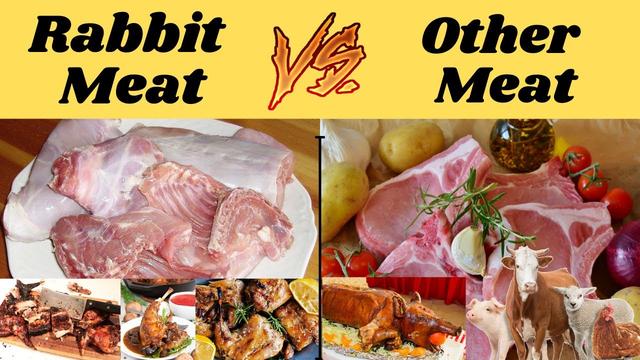
Rabbit meat is often compared to chicken in terms of taste, as it has a similar essence. It is described as almost sweet with a gamey taste, which can vary depending on the recipe used. However, rabbit meat is not as different from chicken as one might expect. Like other meats, the taste of rabbit meat also depends on the type of rabbit consumed. Domestic rabbit meat tends to be less gamey and leaner, while wild rabbit meat is drier and leaner.
One similarity between rabbit meat and chicken is their texture. Both meats have a tender and succulent quality when cooked properly. However, there are slight differences in flavor. Rabbit meat has a unique gaminess that sets it apart from chicken. This gamey taste can be enhanced or subdued depending on the spices and marinades used in cooking.
When it comes to specific cuts of rabbit meat, each part offers its own distinct characteristics. The legs of a rabbit are tougher due to the exercise they undergo, so braising them in liquid is recommended to achieve tender results. The saddle, which includes the loin muscles, provides plenty of tender meat for chewing. Roasting the saddle on the bone adds flavor and helps retain moisture.
The belly flap of a rabbit can be cut into thin strips resembling bacon, offering premium meat with a delicious taste. Additionally, the organs such as heart, liver, and kidneys are often used for sausages and stuffing but can also be incorporated into various recipes like pot pies or stews.
Lastly, while not commonly found in Western cuisine, the head and brains of rabbits are considered delicacies in some cultures. The head is traditionally used to make stock for future dishes, while the brain is sought after as a delicacy in places like China.
In conclusion, while rabbit meat shares similarities with chicken in terms of taste and texture, it also possesses its own distinct flavor profile. The type of rabbit consumed, as well as the cooking method and spices used, can greatly influence the taste. Exploring different cuts and recipes can help one fully appreciate the unique qualities of rabbit meat.
6. Unlocking the Flavors of Rabbit Meat: A Surprising Culinary Experience
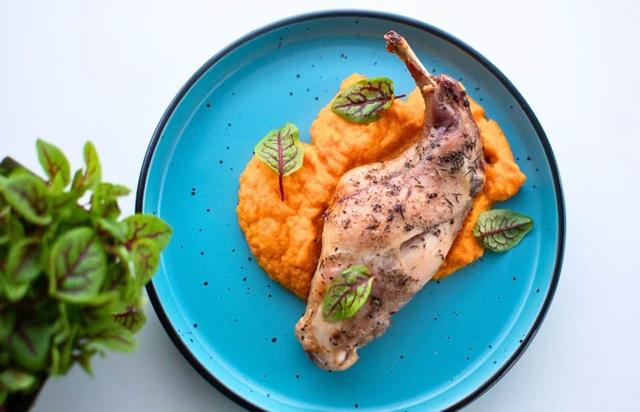
Rabbit meat offers a surprising culinary experience, especially for those who are accustomed to consuming more common proteins like beef, pork, and chicken. While rabbit meat may initially seem like an adventure, its taste is not as different as one might think. In terms of essence, rabbit meat tastes almost like chicken with a slightly sweet and gamey flavor. However, the taste can vary depending on the recipe used. The right combination of spices and marination can either enhance the natural flavor of rabbit or make it even wilder.
When it comes to cooking rabbit, understanding its anatomy is essential. The legs of a rabbit are tougher than the rest of its body due to increased exercise. Therefore, braising the legs in liquid until the meat falls off the bone is recommended. Rabbit stew, confit, and tikka masala are popular recipes that utilize the hind legs and front quarters of the rabbit. For beginners, starting with simple recipes allows one to become accustomed to the unique flavor of rabbit.
The saddle of a rabbit refers to the cut of meat that spans from the rib cage to the hind legs. This area contains tender meat and muscles that work harder to keep the rabbit stable during movement. Roasting saddle meat on the bone adds flavor and helps retain moisture. If a quick cooking method is preferred, removing the loin from the saddle and cooking it separately is an option.
The belly flap of a rabbit is often used for rillettes and pates; however, cutting boneless belly meat into thin strips similar to bacon yields premium cuts for various dishes. Additionally, organs such as heart, liver, kidneys can be used in sausages or stuffing recipes. Rabbit blood can be utilized in stews or blood pudding and sausages.
The head and brains of rabbits are considered delicacies in many countries. Rabbit heads are commonly used to make stock, while the brains are more difficult to find but are considered a delicacy in places like China.
Unlocking the flavors of rabbit meat is truly a surprising culinary experience. Its taste, resembling chicken with a hint of sweetness and gaminess, can be enhanced or altered depending on the recipe and cooking techniques used. Understanding the different cuts and parts of a rabbit allows for creative experimentation in various dishes, from stews to roasts and even sausages. So why not venture into the world of rabbit meat and discover a new realm of flavors?
7. Rabbit Meat 101: Understanding its Distinctive Flavor Profile
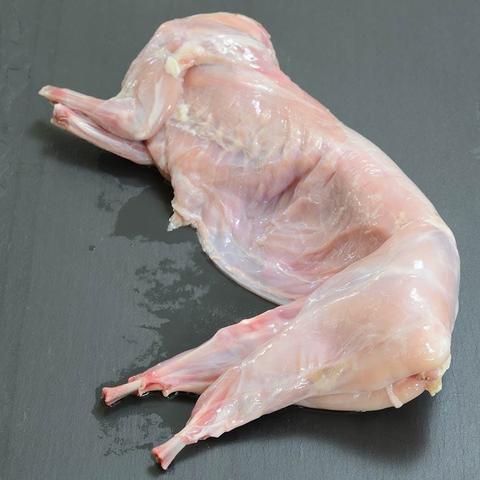
The Essence of Rabbit Meat
Rabbit meat is often compared to chicken in terms of taste, with a hint of sweetness and a gamey flavor. However, the flavor can vary depending on the recipe and the type of rabbit consumed. Domestic rabbit meat tends to be less gamey, while wild rabbit meat is leaner and drier. The right combination of spices and marination can enhance or intensify the flavor of rabbit meat.
Anatomy and Cuts
Understanding the different cuts of rabbit meat can help in cooking it effectively. The legs are tougher due to the exercise rabbits get, making them suitable for braising until the meat easily falls off the bone. Recipes like rabbit stew or confit make great use of the hind legs and front quarters. The saddle, which includes two loin muscles, offers tender meat that can be roasted on the bone for added flavor. Alternatively, the loin can be cooked separately for quicker preparation. The belly flap provides premium boneless meat that can be cut into thin strips similar to bacon.
Utilizing Organs and Head
The organs of a rabbit, including the heart, liver, kidneys, and blood, offer tasty and nutritious options for various recipes such as sausages, stuffing, pot pies, stews, blood pudding, and pates. Additionally, rabbit heads are commonly used to make stock or incorporated into pasta dishes, soups, and stews. While not readily available in some places like China where it is considered a delicacy, rabbit brains can also be included in certain recipes.
By understanding these aspects of rabbit meat’s distinctive flavor profile and utilizing different cuts and parts in cooking, you can explore new culinary experiences with this unique protein source.
8. Tantalizing Your Taste Buds: What to Expect from Rabbit Meat
A Unique Adventure for Your Palate
If you’re someone who has only consumed the typical proteins like beef, pork, and chicken, trying rabbit meat can be a thrilling adventure for your taste buds. While it may seem intimidating at first, rabbit meat actually shares similarities with chicken in terms of its essence. It has a slightly sweet flavor with a hint of gaminess. However, it’s important to note that the taste can vary depending on the recipe you use. The right combination of spices and marination can either enhance the natural flavors of rabbit or make it even more wild and robust.
Differences Based on Rabbit Type
Similar to other meats, rabbit meat can also be distinguished based on the type of rabbit you consume. Domestic rabbit meat tends to be less gamey and leaner compared to wild rabbit meat, which is drier and leaner. Therefore, if you prefer milder flavors, opt for domestic rabbit meat. On the other hand, if you enjoy stronger tastes and are looking for a more rustic experience, try cooking with wild rabbit meat.
Anatomy of a Rabbit: Utilizing Every Part
When purchasing rabbit meat from your frozen food aisle or if you’re interested in catching game yourself, it’s helpful to understand how different parts of the rabbit are used in cooking. The legs of a rabbit are tougher due to their constant exercise, so braising them in liquid until the meat falls off the bone is recommended. The saddle, which includes the rib cage and hind legs, offers tender meat that can be roasted on the bone for added flavor and moisture. The belly flap provides premium boneless meat that can be cut into thin strips similar to bacon.
Exploring Lesser-Known Delicacies
Rabbit also offers unique delicacies for the more adventurous eaters. The organs, such as the heart, liver, and kidneys, are not only tasty but also nutritious. They can be used in sausages, stuffing, and even a rabbit pot pie. Rabbit blood is utilized in various stews, recipes, blood pudding, and sausages. Additionally, the rabbit head and brains are considered treats in many countries. The head can be used to make stock or cooked for future dishes. While it may be challenging to find rabbit brain in some places, it is considered a delicacy in others like China.
In summary, trying rabbit meat is an exciting culinary experience that opens up new flavors for your taste buds. With its similarity to chicken but with a touch of gaminess, rabbit meat offers a unique taste profile that can be further enhanced through different cooking techniques and recipes. By understanding the anatomy of a rabbit and utilizing each part creatively, you can explore various delicious dishes while embracing the lesser-known delicacies that this versatile meat has to offer.
9. From Wild to Domesticated: How Different Types of Rabbits Impact Taste
When it comes to the taste of rabbit meat, there is a noticeable difference between wild and domesticated rabbits. Wild rabbit meat tends to be drier and leaner compared to the meat from domesticated rabbits. This is because wild rabbits have more muscle mass due to their active lifestyle in the wild. On the other hand, domesticated rabbit meat is less gamey and has a milder flavor.
The type of rabbit you choose to eat will also impact the taste. Different breeds of rabbits have varying flavors and textures in their meat. Some breeds are known for their tender and succulent meat, while others may have a slightly tougher texture. It’s important to consider these factors when selecting a rabbit for cooking.
Factors Affecting Rabbit Meat Taste:
– Breed: Different breeds of rabbits have different flavors and textures in their meat.
– Diet: The diet of the rabbit can also influence its taste. For example, a rabbit that has been fed a varied diet with plenty of fresh greens may have a more flavorful meat.
– Age: The age of the rabbit can affect its taste as well. Younger rabbits tend to have more tender meat, while older rabbits may have a stronger flavor.
– Cooking Method: The way you cook rabbit meat can greatly impact its taste. Proper seasoning, marination, and cooking techniques can enhance the natural flavors of the meat.
In conclusion, while there are some variations in taste between wild and domesticated rabbits, as well as different breeds, overall rabbit meat is often described as tasting similar to chicken with a slightly sweet and gamey flavor. Experimenting with different recipes and cooking methods can help bring out the best flavors in this versatile protein source.
10. Enhancing the Flavor of Rabbit Meat: The Role of Spices and Marination
Spices and marination play a crucial role in enhancing the flavor of rabbit meat. As mentioned earlier, rabbit meat has a mild taste similar to chicken but with a slightly gamey undertone. However, by using the right combination of spices and marination techniques, you can elevate the flavor profile of rabbit meat to suit your preferences.
Spices
Adding spices to your rabbit meat can help bring out its natural flavors and add depth to the dish. Common spices used in rabbit recipes include thyme, rosemary, sage, garlic, paprika, and black pepper. These aromatic herbs and spices not only enhance the taste but also complement the delicate texture of rabbit meat.
You can create a flavorful spice rub by combining these spices with salt and applying it generously to the rabbit before cooking. Alternatively, you can add them directly to your marinade or sauce for a more infused flavor.
Marination
Marinating rabbit meat is another effective way to enhance its flavor. Marinating helps tenderize the meat while infusing it with various flavors. A simple marinade for rabbit meat can consist of olive oil, lemon juice or vinegar, garlic, herbs like thyme or rosemary, salt, and pepper.
Allowing the rabbit meat to marinate for at least an hour (or even overnight) will ensure that it absorbs all the flavors from the marinade. This process not only adds moisture but also tenderizes the meat for a more succulent texture.
Additionally, you can experiment with different types of marinades such as Asian-inspired soy-based marinades or Mediterranean-style herb-infused marinades to create unique flavor profiles for your rabbit dishes.
Using spices and marination techniques allows you to customize the taste of rabbit meat according to your preferences. Whether you prefer a more subtle flavor or a bolder, spicier taste, these methods can help you achieve the desired result. So don’t be afraid to get creative and explore different spice blends and marinades to enhance the flavor of your rabbit meat dishes.
11. An Introduction to Cooking with Rabbit: Exploring Different Cuts and Their Tastes
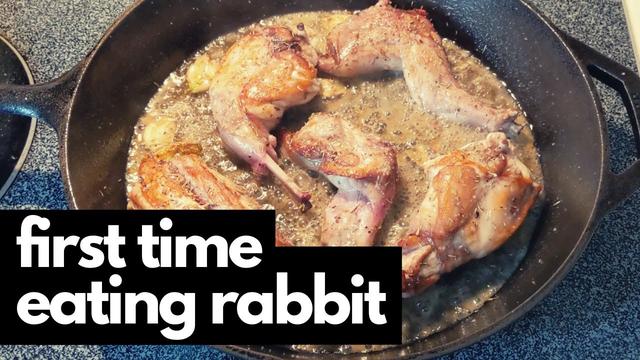
Rabbit meat is often compared to chicken in terms of taste, with a slightly sweet and gamey flavor. However, the taste can vary depending on the type of rabbit you eat. Domestic rabbit meat is less gamey and wild rabbit meat is drier and leaner. The right combination of spices and marination can enhance or change the flavor of rabbit meat.
When it comes to cooking rabbit, it’s important to understand the different cuts and how they are best utilized. The legs of a rabbit are tougher due to their exercise, so braising them in liquid until the meat falls off the bone is recommended. This makes them perfect for dishes like rabbit stew, confit, or tikka masala.
The saddle, which includes the loin muscles and surrounding ski, provides tender meat that can be roasted on the bone for added flavor and moisture. If you prefer a quicker cooking method, you can remove the loin and cook it separately.
The belly flap of a rabbit can be cut into thin strips similar to bacon, providing premium meat for various recipes. The organs such as heart, liver, kidneys, and even blood can be used for sausages, stuffing, stews, pies, blood pudding, or sausages.
The head of a rabbit is also commonly used in cooking. It can be used to make stock or as an ingredient in pasta dishes, soups, or stews. In some cultures like China, the brain is considered a delicacy.
Overall, cooking with rabbit offers a variety of cuts with distinct flavors and textures. Whether you’re a beginner or an experienced cook looking for something new to try, experimenting with different cuts of rabbit meat can provide exciting culinary experiences.
Types of Rabbit Cuts:
– Legs: Tougher meat that is best braised and served falling off the bone.
– Saddle: Tender meat that can be roasted on the bone or cooked separately as loin.
– Belly: Boneless meat that can be cut into thin strips similar to bacon.
– Organs: Heart, liver, kidneys, and blood can be used for sausages, stuffing, stews, pies, pudding, or sausages.
– Head: Used for making stock and can be an ingredient in pasta dishes, soups, or stews.
Remember to start with simple recipes to get accustomed to the flavor of rabbit meat before trying more complex dishes. Enjoy the adventure of cooking with rabbit and exploring its different cuts and tastes.
In conclusion, the taste of rabbit can be described as lean and mild, similar to chicken but with a hint of gaminess. The meat’s tenderness and subtle flavor make it a versatile ingredient for various culinary creations. Whether roasted, stewed, or grilled, rabbit offers a unique dining experience for those seeking an alternative protein source.
Learn More About Grilling
If you want to learn more about grilling, check out these other helpful resources!


